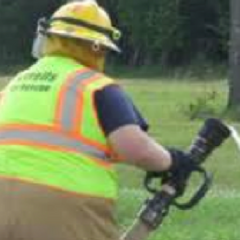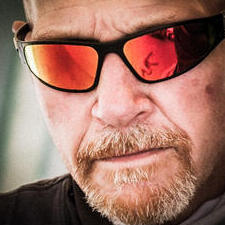Leaderboard
-
in all areas
- All areas
- Adverts
- Advert Questions
- Advert Reviews
- Videos
- Video Comments
- Blog Entries
- Blog Comments
- Images
- Image Comments
- Image Reviews
- Albums
- Album Comments
- Album Reviews
- Files
- File Comments
- File Reviews
- Dropzones
- Dropzone Comments
- Dropzone Reviews
- Gear
- Gear Comments
- Gear Reviews
- Articles
- Article Comments
- Article Reviews
- Fatalities
- Fatality Comments
- Fatality Reviews
- Stolen items
- Stolen item Comments
- Stolen item Reviews
- Records
- Record Comments
- Record Reviews
- Help Files
- Help File Comments
- Help File Reviews
- Events
- Event Comments
- Event Reviews
- Posts
- Status Updates
- Status Replies
-
Custom Date
-
All time
January 20 2016 - August 23 2025
-
Year
August 23 2024 - August 23 2025
-
Month
July 23 2025 - August 23 2025
-
Week
August 16 2025 - August 23 2025
-
Today
August 23 2025
-
Custom Date
08/08/2022 - 08/08/2022
-
All time
Popular Content
Showing content with the highest reputation on 08/08/2022 in all areas
-
2 pointsGet a big wingsuit! That way you have the sky to yourself under canopy For realsies though my rule is: If I can count every canopy on the load (like a 182 DZ), then I'll be a total asshole under canopy. Spirals, stalls, have a good pee... You know the works If I can't count all canopies easily then I fly like a conservative grandma going to church. So just depends on the DZ/load specifics
-
1 pointIntro As there are not a lot of ressources regarding a transition from skydiving to paragliding/speedflying available online, I decided to share my experiences and impressions in this post here. Even if you are not planning to get into paragliding yourself, it might still give some interesting insights. If you like, I can keep you updated on my journey. About my skydiving background Originally from Austria, I started skydiving in southern Germany back in August 2012 and got pretty hooked on it. After spending every weekend at the dropzone for about a year, I decided to quit my regular job, move to the dropzone and pursue a career there, although I always had to support it with at least a part time "normal" job. Living off skydiving alone is almost impossible within Germany. After about two years (as soon as legally possible) I got my coach and tandem instructor rating. I was able to earn money with skydiving from that point on, mainly doing videos, tandems and coaching jumps. My AFF rating followed soon after. My favourite discipline in skydiving has always been canopy piloting, why I invested lots of time, money and effort into that. I quit skydiving in the beginning of 2020 as I was starting to burn out after 7 seasons of 7-day-weeks during the summer and moved back to my origin in the Alps of Austria at the beginning of this year. Alltogether I did about 3500 jumps of which about 2000 have been on solo-canopies. My canopy progression was: * PD 170 (~150 jumps) * Pilot 150 (~150 jumps) - started working on high-performance landings with that canopy * Pilot 132 (~200 jumps) * Katana 120 (~200 jumps) * Velocity 96 (~300 jumps) * Valkyrie 84 (~1.000 jumps) - loaded with up to 35lbs of extra lead (total exit weight around 220lbs) (sample landing) Do not take my personal path as advice for your own downsizing. I went through some downsizing steps rather fast, but keep in mind that I did many of these jumps in shorter timespans than many other people and always had direct mentoring from more experienced pilots available. In retrospective I have to say, that the step from the Pilot 132 to the Katana 120 was the most challenging. My paragliding experience until now I started my training at Cloudbase, a professional, commercial paragliding school in Zell am Ziller (Tyrol, Austria) - huge recommendation by the way - last Saturday and completed my final exam yesterday. Usually training takes a bit longer (40 flights) but due to local regulations a shortcut for licensed skydivers is possible (15 flights, although practically not appropriate in many cases). Theoretical instruction is easy, but covers topics that many skydivers have likely never had any contact with. It might have helped that I also hold a commercial pilot license for airplanes and have quite some knowledge regarding meteorology and basic aerodynamics, but I doubt that my skydiving experience gave me an advantage in that area. During training (and some test flights today) I had the chance to fly the following paragliding wings (surface area in brackets although less relevant): * Mescal S (240 sqft) * Masala S (235 sqft) * Susi 23 (213 sqft) * Susi 21(190 sqft) * Kode P 18 (173 sqft) * Tonic 2 S (172 sqft) How do paragliding wings compare to skydiving canopies? I was surprised how much performance even large student paragliding wings offered in comparison to skydiving canopies for students. While a skydiving canopy for students (and to be honest - also most intermediate skydiving canopies) allows the pilot to hang in the harness like a bag of water and yank on the steering lines without any requirement for sensitivity, a paragliding wing requires immensely more coordinated inputs by harness and brakes to achieve an acceptable amount of control. I suppose a docile student paragliding wing would likely still not kill you, but it will be a very uncontrolled ride, if you fly it the same way a skydiving canopy allows you to fly. Techniques required to fly real high-performance skydiving canopies transition very well to paragliding. From the first flight on paragliding felt very natural and I had the feeling of having a good amount of control over the wing. I got lots of compliments to be the very first skydiver at the school with sensitivity for brake inputs. Aside from techniques like doing big ears, that are not used/available in skydiving, a huge difference is the possibility of (unintentionally) inducing extended rolling and pitching oscillations and the inputs required to stop these oscillations. Standard skydiving canopies do not really require such inputs and will quickly self stabilize (or at least keep the oscillations low). High-performance skydiving canopies require such inputs but still stabilize quicker than paragliding wings. While angle-of-attack control is not necessarily required to safely fly a skydiving canopy, like it is on a paragliding wing, it certainly allows much better flight path control even on less performant skydiving wings (Did you ever feel your controls become "mushy" after recovering from a turn input? Surprise! There's ways around that...). Some skydiving pilots might bring that skill, some might not. Paragliding wings are a lot easier to flare than their skydiving counterparts. I did not see a lot of really bad flares during the course on my coursemates without any pre-experience. That is likely due to the much lower sink rate and more lift that paragliding wings provide. I would not expect any skydiver to have much trouble correctly flaring a paragliding wing. Paragliding wings seem a lot less critical regarding low turns. While even very docile student skydiving canopies react with a good amount of dive to any turn, I have seen safe turns at heights that sent shivers down my former skydiving instructor spine during the past week. There are other dangers that come with paragliding wings, but the risk coming with low turns seem a lot lower with paragliding. I do not have any numbers on that feeling, so take it with a grain of salt. Conclusion I have a hand full of paragliding flights by now, so my opinion might either be false or have to be revised by myself in the future. High-performance canopy flying experience transitions very well to paragliding and should allow you to feel comfortable on a paragliding wing quickly. Controls are different but follow very similar principles. If you got the feeling for a high-performance skydiving canopy, you will likely have the feeling for a paragliding wing. At least a docile one (like to ones I used to fly during the past week) and at least in my case. I doubt that limited, other skydiving experience will give you a huge advantage on paragliding. Some things might feel similar, certainly taking away a good amount of stress. Some of your habits might be very counter-productive. And it is very well possible that you will have to seriously extend your "toolbox of canopy control". Recommendations In any case, do not assume that you know how to fly a paragliding wing, because you know how to control a skydiving canopy. It's different. I for my part decided to go with the Tonic 2 S for now. It's very slow in comparison to the Valkyrie 84 I used to fly, but it still behaves reasonably agile and I have the feeling that I got a good amount of work to do until I can fly it perfectly to its limits. It outperforms similarly sized skydiving canopies by far. Speedflying is my goal, but I do not see any reason to rush it. Doing some paragliding training could be a good addition to becoming a great skydiving canopy pilot. I can see paragliding skills and knowledge transition extremely well to skydiving canopy control, if you already bring some skydiving experience. Paragliding training is super cheap in comparison to skydiving. And it's a huge amount of fun.
-
1 pointDuring my AFF, instructors warned students not to do spiral turns as what lots of fun jumpers do. But after I got A, until now with around 230 jumps, I normally like to do several spiral turns (no more than 3x360deg turn) above 1500 - for fun, or get under someone to have a less busy pattern. Fun jumpers talk about “spiraling down to get down faster” all the time. And with more than 100jumps I did in my home dz over 1 year, no instructors/S&TAs had problems with it. So as long as I’m aware of the airspace/traffic/altitude, I thought spiral turn is just a normal maneuver. But recently, another (the very safe kind of) fun jumper lectured me about not doing more than 90deg turns, and also said spiraling down is not even allowed in some dzs. What do more experienced jumpers think?
-
1 pointBaking okalb: I grew up in Canada and did most of my travelling with the Canadian Armed Forces. Medical care was great when I was young, especially for my sickly younger brother. During my 30s and 40s, I worked in the USA and thank my lucky stars that I never got injured. After age 50, I moved back to Canada and am glad that I did because as I age, my medical expenses grow. The public purse paid for most of my medical care in the aftermath of a plan crash. I have already had a couple of surgeries paid from the public purse and am scheduled for another surgery next week. Growing old is not for the faint of heart.
-
1 pointHow does he not get charged with perjury....the justice system really is a joke.
-
1 pointIt's like holding a fart in the airplane. You don't do it for yourself, you do it for your fellow skydivers. What could be more noble?
-
1 pointMany drop zones discourage spirals and some even prohibit them as a way to reduce collision risks. I'm ok with spirals above pattern altitude as long as the jumper has cleared the air around and below. From pattern altitude to the ground I discourage any turns not required for reasonable accuracy.
-
1 pointI've spent some time in the DWI's lately, mostly Curacao and Bonaire. They're under the Dutch system. Often, for anything moderately serious the Dutch pay for transport to Colombia. I have heard nothing but rave reviews for the Colombian system. Years ago I was tripped by a gallon of German Beer coming out of a bar at a Bangkok night market, landed face first on broken concrete, and split my forehead open scalp to eyebrow. The taxi called in our arrival to the Hospital and the Doctor and a Nurse with a wheel chair were waiting out front. It's way after midnight and a highly skilled surgeon with extensive plastic surgery training was on duty and standing by. $250 for all tests, medications, imaging and extra dressings to go. Three weeks later the Nurse at the Hotel who removed the stitches, and who also had plastic surgery training, (over 5 days because you don't rush these things) finished the job-no cost. I was counting on sporting a 3 inch, red, angry scar but the result is near invisible. So yes, things can be great elsewhere.
-
1 pointRecently a routine police patrol was parked outside a bar late one night. After last call, the officer noticed a man leaving the bar so apparently intoxicated that he could barely walk. The man stumbled around the parking lot for a few minutes, with the officer quietly observing. After what seemed an eternity, in which he tried his keys on five different vehicles, the man managed to find his car and fall into it. He sat there for a few minutes as a number of other patrons left the bar and drove off. Finally he started the car, switched the wipers on and off; it was a fine, dry summer night, flicked the blinkers on and off a couple of times, honked the horn and then switched on the lights. He moved the vehicle forward a few inches, reversed a little, and then remained still for a few more minutes as some more of the other patrons' vehicles left. At last, when his was the only car left in the parking lot, he pulled out and drove slowly down the road. The police officer, having waited patiently all this time, now started up his patrol car, put on the flashing lights, and promptly pulled the man over and administered a breathalyser test. To his amazement, the breathalyzer indicated no evidence that the man had consumed any alcohol at all! Dumbfounded, the officer said, "I'll have to ask you to accompany me to the police station. This breathalyser equipment must be broken." "I doubt it," said the truly proud guy. "Tonight I'm the designated decoy."
-
1 point"Ladies and gentlemen, I'll be brief. The issue here is not whether we broke a few rules, or took a few liberties with our female party guests - we did. But you can't hold a whole fraternity responsible for the behavior of a few, sick twisted individuals. For if you do, then shouldn't we blame the whole fraternity system? And if the whole fraternity system is guilty, then isn't this an indictment of our educational institutions in general? I put it to you, Greg - isn't this an indictment of our entire American society? Well, you can do whatever you want to us, but we're not going to sit here and listen to you badmouth the United States of America. Gentlemen!"
-
1 pointSure, but the way the right came unglued you'd have thought it wasn't a nanosecond long smooch by comic characters but a flock of lesbians scissoring to Breaking Ball at school play intermission. What a bunch of jerks.
-
1 pointThough reversals can go beyond TBAR.. I looked at the reverse flow and rejected it for two reasons.. The movement is limited to maybe 3 miles in a tidal cycle. But, only the top layer is reversed by tides and winds, the lower layer continued to flow downstream.. since the money does not float (for very long) it would not be moved in the top layer. There were clamshell dredging operations at the mouth of the Lewis and mouth of the Columbia that subsequently moved material upstream but I couldn't find any specifics.. One big project was the Sauvie Island shore remediation across from and upstream of TBAR.. I can't confirm where that material came from.. and then you need to account for the diatoms. There is just no way figure out the TBAR money beyond theories unless somebody comes forward and admits something like they found some money in the woods and later threw it in the River because it couldn't be used..
-
1 pointAt the end of the day, what is the point of human misery unless someone else is profiting obscenely from it?
-
1 pointThere is a coordinate in the FBI files that is interesting.. it doesn't say why. 7.2 miles from the man seen heading W at Fredrickson and Lewis River Road.
-
1 pointIt is a different witness but they both describe a similar incident. Would be nice to have the location of the second incident.
-
1 pointThat reminds me of this very similar report... I wonder if the two are related? Maybe even a part of the same incident from the perspective of another person in the car?
-
1 point
-
1 pointIt’s nowhere near that simple. His trial lawyers may be so incompetent it seems like their strategy was to shoot for a mistrial on the grounds of malpractice but his money men probably know what they’re doing. The fight to find the assets he claims don’t exist is going to go on for years.
-
Newsletter





.thumb.jpg.4bb795e2eaf21b8b300039a5e1ec7f92.jpg)